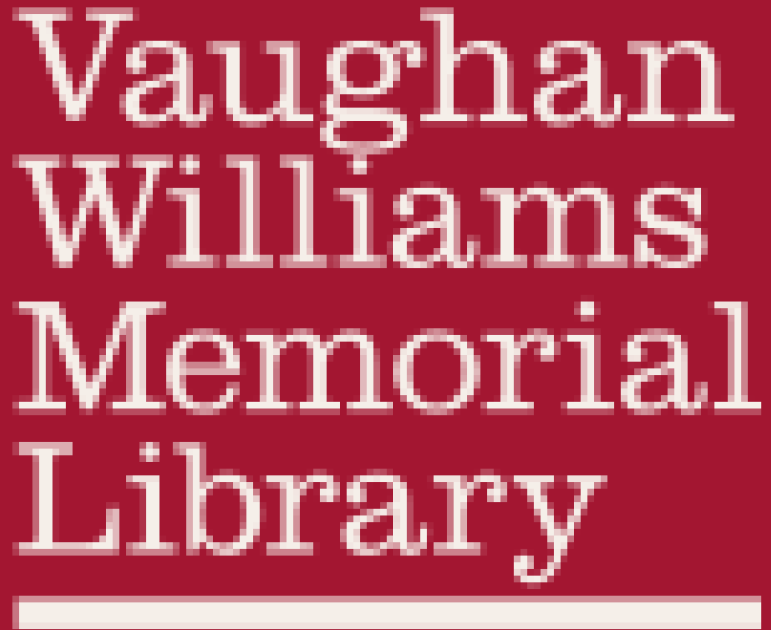Remembering Pat Shaw
- Details
-
Published: Friday, 22 September 2017 10:00
Archivist David Plant writes:
This year marks the centenary of the birth of Pat Shaw, one of the foremost composers and collectors of folk song and dance of the twentieth century.
Through his performances, his teaching and his research, Pat became a popular and committed ambassador for the folk music tradition, and performed numerous times at Cecil Sharp House. Pat Shaw’s archive has been fully catalogued and is available to researchers in our Vaughan Williams Memorial Library. EFDSS will soon be hosting events in Pat’s honour, so now seems a fitting time to examine his career and his legacy.
Pat Shaw
Patrick Noel Shuldham-Shaw (1917-1977) was born into a musical family. His mother Winifred Holloway was a singer and accomplished harpsichord, piano and clavichord player. A close friend of Cecil Sharp, Winifred was active in the folk song and dance revival during the 1910s and on Sharp’s death in 1924 became the honorary secretary of the Cecil Sharp Memorial Fund. The fund was responsible for the building of Cecil Sharp House, which remains the home of the English Folk Dance and Song Society.
Pat first developed his interest in music during his school days at Harrow in the 1930s, and was already composing dances by the time he was thirteen. He started writing down his compositions in a series of manuscript books, beginning with My Boy Willie written in 1942. This was written while Pat was serving in the fire service in Birmingham, and Pat took up singing professionally four years later. Throughout his career he wrote many original folk tunes, ranging from simple catches and rounds, to carols and complete scores.
Pat was also known for the many dances he created, often to commemorate events in the lives of his many friends and colleagues in the world of folk music and dance. Through his historical research Pat became an authority on the English country dance, and challenged some of Cecil Sharp’s notations of country dances. Many of Pat’s dance creations and discoveries were trialled with help from local dancing groups, most notably the Whirligigs, led by Marjorie Fennessy.
Pat also undertook many collecting trips to different countries to note and preserve traditional tunes and dances. In this way he maintained long associations with the folk community on the Shetland Islands, with the Welsh Folk Dance Society and with the Nederlandse Volksdans Stitching, the Dutch folk dance society. Pat visited the USA in 1974, to teach country dancing at Pinewoods Dance Camp in Massachusetts. This is considered a watershed moment in the teaching of English dances in America. His commitment to Pinewoods included the creation of booklets of dances to raise funds for the camp.
Pat promoted traditional music, most notably through events at Cecil Sharp House and as part of the Sing for Pleasure initiative, and was a skilled dancer of Morris, sword and country dances. Pat took part in EFDSS displays across Europe and South Africa, as well as the annual folk festival at the Royal Albert Hall. At these festivals, Pat often acted as producer or musical arranger as well as performing. He also took part in radio broadcasts from the 1940s onwards, and features on numerous recordings, including many albums of songs for children.
In 1971 Pat was honoured with the EFDSS Gold Badge Award for his outstanding contribution to the study and promotion of folk music. At around this time, he began working for the School of Scottish Studies on a project to create an eight-volume publication on the Greig-Duncan Folk Song Collection.
Pat died suddenly from a heart attack in November 1977, shortly before his sixtieth birthday. Since then various events have taken place to keep Pat’s legacy alive, and his friends and colleagues Marjorie Fennessy and Brenda Godrich have written a series of books on Pat’s life and work. Marjorie was also instrumental in the acquisition by EFDSS of Pat’s archive.
The Pat Shaw Archive Project
Pat’s considerable collection of papers arrived at Cecil Sharp House in a series of boxes, plastic crates and suitcases, and took up around 15 of our metre-long shelves. The collection includes a vast amount of handwritten music and dance notation, as is only to be expecting given Pat’s appetite for creating and collecting. In amongst this was an array of souvenirs from Pat’s many activities – leaflets advertising events he participated in, recordings of his performances and dummies of his pamphlets for printing. Also, rather touchingly, were a few mementoes of his mother, including framed photographs and a scrapbook of her performances which she gave as a present to her father.
Marjorie had made some in-roads into sorting through the collection, particularly Shaw’s dance papers, whilst researching for her publications. However the majority of papers, especially the handwritten tunes composed and collected by Shaw were in no discernible order. I therefore began creating an inventory of the entire contents – every notebook, every scrap of dance notation and of course every handwritten tune.
From this I worked alongside one of our archive volunteers, Mike Wilson-Jones who had known Pat and who I hoped would be able to identify some sort of pattern within the collection. Mike confirmed there was no apparent order, but together we came up with some suitable groupings in which to store and classify the tunes. These included Pat’s many and varied catches and rounds, plus his scores and Christmas music. Although this goes against the basic archival principle of maintaining papers in their original order, some sort of rearrangement was obviously required as an interpretive aid for researchers.
From our research I developed a catalogue which included a description of each individual items. This was obviously rather a lengthy process given that many documents contained several named tunes. Each title needed to be named in the catalogue for it to be fully searchable online. In addition, as a further access tool, the names of all tunes will be added to our main online song catalogue.
Pat’s papers, along with many of his recordings have been rehoused in archival-quality files and boxes, and are available to researchers in our library. This furthers our commitment to fully describing our collections, alongside the James Madison Carpenter Project, and the Society’s Full English project. This latter project catalogued and rehoused some of our flagship collections, such as the song archives of Cecil Sharp, Lucy Broadwood and George Butterworth. Having spent much of the last two years immersed in Pat’s writings I feel he certainly deserves to be in this illustrious company.
Further Information
In addition to the Day of Celebration at Cecil Sharp House on 24th September, a whole year of events is underway. For more information on these events, plus the publications relating to Pat, see website of the Pat Shaw Legacy Group: http://www.patshaw.info


